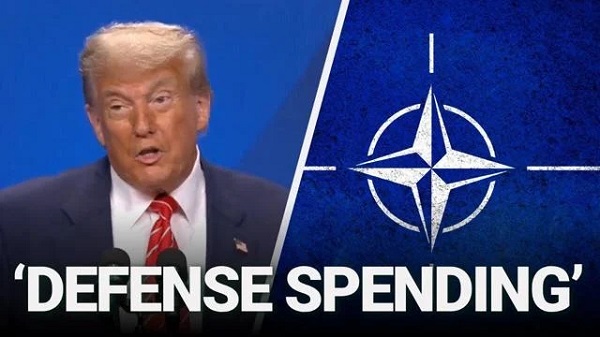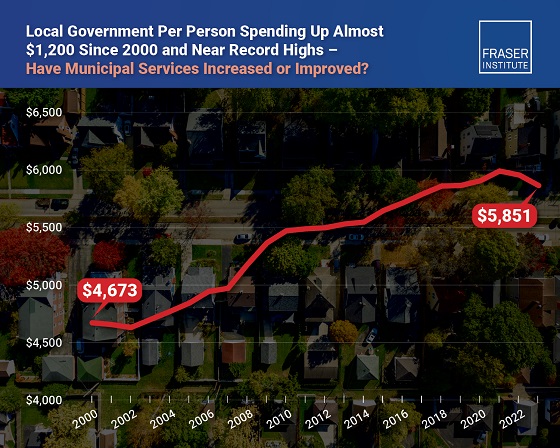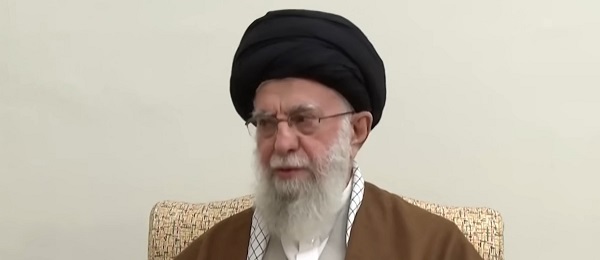Bruce Dowbiggin
Can’t Catch This: The Avs Take The Pace Higher And Higher
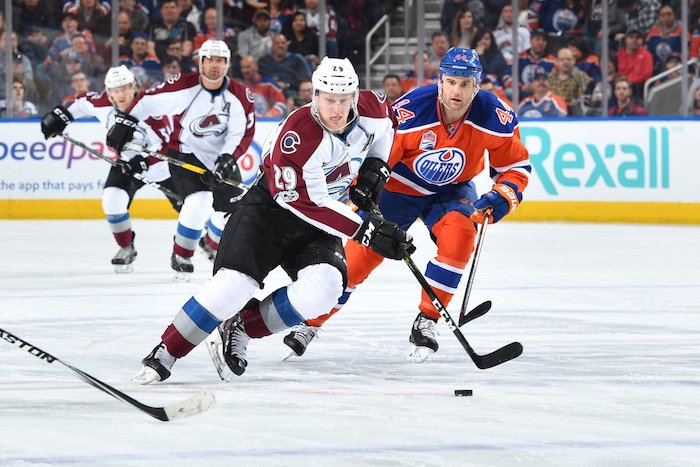
After watching this year’s turbo-charged NHL playoffs perhaps it’s time to amend the old cliché to now say “lack of speed kills”. If there’s one takeaway from the Colorado Avalanche’s Top Gun performance en route to a Stanley Cup it’s that you can’t win in today’s NHL without blazing speed.
Led by their superstar burner Nathan MacKinnon and freewheeling defenceman Cale Maker the Avs have blitzed opponents. The Avs quickly shellacked Nashville 4-0, averaging over 5 goals a game. St. Louis proved a tougher nut to crack, pushing Colorado to 6 games, including two OTs before succumbing. The dazed Edmonton Oilers— with generational star Connor McDavid— fell in four, surrendering over 5 goals per game to the Avs’ whirlwind.
And now two-time defending champions Tampa Bay are holding onto the ropes after getting swept in Games 1 & 2, the second a humiliating 7-0 thrashing of the Lightning and their star goalie Andrei Vasilevsky. The Bolts had been 9-2 in the second game of a series dating back to 2020, but it did them no good.
How are they doing it? Blitzing, unrelenting speed and pressure from McKinnon, Makar, captain Gabriel Landeskog, Mikko Rahntenen, Arturi Lekhonen, Andre Burakovsky, Valeri Nichushkin and Devon Toews. So confident are the Avs that they’ve been able to hide their very average goaltending duo of Darcy Kuemper and backup Pavel Francouz. Their puck possession in Gm. 2 was daunting, keeping the Lightning to just 16 SOG.
Also impressive is the Avs’ use of the 180-foot game to escape their own zone carrying speed into the opponent’s end. This stretch passing is a revelation seen more and more— Edmonton, Calgary and Toronto employed it this season— but Colorado’s use— keyed by MacKinnon— has been devastating to opponents.
We postulated in February that goaltending might sink the Oilers and Maple Leafs And while Mike Smith tried his damndest to torpedo the Oilers it was Edmonton’s inability to keep up with Colorado’s blitz that doomed them. Toronto’s Jack Campbell held on gamely against the Lightning, but Toronto’s offensive firepower was blunted by Tampa’s grit and experience.
It is clearly a new day in the NHL when grizzled coaches like Darryl Sutter, a longtime proponent of clutch-and-grab, concede to speed. The Flames thrived on breakout passing and using the 180-foot game. Unfortunately Sutter couldn’t replicate the regular-season firepower of Johnny Gaudreau and Matthew Tkachuk against McDavid’s brilliance.
So if track-meet hockey is the future what does it say for the Canadian NHL franchises who went a 29th season without a Stanley Cup? Are any of them prepared to unleash the whirlwind next fall? You can probably eliminate Montreal , Ottawa and Winnipeg from the equation. Their time is a ways off.
Toronto: The Leafs were the biggest failure of the season, failing to win their conference or division despite a star-studded lineup. As such they drew Tampa in Rd.1 and it was Peggy Lee time. “Is that all there is?” The Leafs have elite players, but they also have a fanatical fan base that wants to win yesterday.
But the Avs should serve as an example of the patience you need. McKinnon was drafted in 2013, Makar in 2017. Other parts— including coach Jared Bednar— came slowly. There were painstaking losses in early rounds of the playoffs. But now, nine years after MacKinnon, they seem ready.
Yes, moves need to be made in Toronto. The question is can coach Sheldon Keefe assemble the elements, convince his team he’s got the plan and use his weapons to blitz slew-footed opponents?
Edmonton: No doubt the Oilers have impressive parts. MacDavid was transcendent against L.A. and Calgary. Zak Hyman bolstered the second line scoring. But with elite sniper Leon Draisaitl hobbled the Oil were boat raced by the Avs. With their top-heavy payroll and wobbly goaltending, can they find speed in the bottom two lines to break through? Can young coach Jay Woodcroft get a system that emphasized the speed we saw on occasion against Calgary?
Calgary: As mentioned, the Flames looked to be disciples of dashing hockey till the Oilers exposed their second and third lines, and Jacob Markstrom fell apart in nets. Worse for the Flames is the free-agent status of their marquee star Johnny Gaudreau, who has yet to announce if he’s gong to stay or go home to the U.S. Northeast.
Gaudreau’s high-speed dexterity pushed players like Tkachuk and Elias Lindholm to great years. It’s hard to see them spreading the rink without the dynamic Gaudreau engineering the offence. The Flames are also not a young team after adding veterans down the stretch who failed to move the needle. They could push for a Cup with Gaudreau or start to re-tool without him.
Vancouver: The Canucks missed the playoffs and it’s hard to see this roster finding a MacKinnon or McDavid gear next year with no premium draft picks available. Quinn Hughes looks poised to be as Makar-style D man in the future, but the forward group is a hot mess beyond Elias Petterson and Bo Horvat. It’s a long way from 2011 fior Vancouver fans and this won’t help the recovery much either.
So for Canadians looking at a likely candidate for a Cup in the near future, put your money on the Leafs and hate yourself for doing so.
Bruce Dowbiggin @dowbboy is the editor of Not The Public Broadcaster (http://www.notthepublicbroadcaster.com). The best-selling author was nominated for the BBN Business Book award of 2020 for Personal Account with Tony Comper. A two-time winner of the Gemini Award as Canada’s top television sports broadcaster, he’s also a regular contributor to Sirius XM Canada Talks Ch. 167. His new book with his son Evan Inexact Science: The Six Most Compelling Draft Years In NHL History is now available on http://brucedowbigginbooks.ca/book-personalaccount.aspx
Bruce Dowbiggin
The Game That Let Canadians Forgive The Liberals — Again

With the Americans winning the first game 3-1, a sense of panic crept over Canada as it headed to Game 2 in Boston. Losing a political battle with Trump was bad enough, but losing hockey bragging rights heading into a federal election was catastrophic for the Family Compact.
“It’s also more political than the (1972) Summit Series was, because Canada’s existence wasn’t on the line then, and it may be now. You’re damn right Canadians should boo the (U.S.) anthem.” Toronto Star columnist Bruce Arthur before Gm. 1 of USA/ Canada in The 4 Nations Cup.
The year 2025 is barely half over on Canada Day. There is much to go before we start assembling Best Of Lists for the year. But as Palestinian flags duel with the Maple Leaf for prominence on the 158th anniversary of Canada’s becoming a sovereign country it’s a fair guess that we will settle on Febuary 21 as the pivotal date of the year— and Canada’s destiny as well.
That was the date of Game 2 in the U.S./Canada rivalry at the Four Nations Tournament. Ostensibly created by the NHL to replace the moribund All Star format, the showdown of hockey nations in Boston became much more. Jolted by non-sports factors it became a pivotal moment in modern Canadian history.
Set against U.S. president Donald Trump’s bellicose talk of Canada as a U.S. state and the Mike Myers/ Mark Carney Elbows Up ad campaign, the gold-medal game evoked, for those of a certain age, memories of the famous 1972 Summit Series between Canada and the USSR. And somehow produced an unprecedented political reversal in Canadian elections.
As we wrote on Feb. 16 after Gm. 1 in Montreal, the Four Nations had been meant to be something far less incendiary. “Expecting a guys’ weekend like the concurrent NBA All Star game, the fraternal folks instead got a Pier Six brawl. It was the most stunning beginning to a game most could remember in 50 years. (Not least of all the rabid Canadian fanbase urging patriotism in the home of Quebec separation) Considering this Four Nations event was the NHL’s idea to replace the tame midseason All Star Game where players apologize for bumping into each other during a casual skate, the tumult as referees tried to start the game was shocking.
“Despite public calls for mutual respect, the sustained booing of the American national anthem and the Team Canada invocation by MMA legend Georges St. Pierre was answered by the Tkachuck brothers, Matthew and Brady, with a series of fights in the first nine seconds of the game. Three fights to be exact ,when former Canuck J.T. Miller squared up with Brandon Hagel. (All three U.S. players have either played on or now play for Canadian NHL teams.)
“Premeditated and nasty. To say nothing of the vicious mugging of Canada’s legend Sidney Crosby behind the U.S. net moments later by Charlie McEvoy.”
With the Americans winning the game 3-1 on Feb. 15, a sense of panic crept over Canada as it headed to Game 2 in Boston. Losing a political battle with Trump was bad enough, but losing hockey bragging rights heading into a federal election was catastrophic for the Family Compact. As we wrote in the aftermath, a slaughter was avoided.

“In the rematch for a title created just weeks before by the NHL the boys stuck to hockey. Anthem booing was restrained. Outside of an ill-advised appearance by Wayne Gretzky— now loathed for his Trump support— the emphasis was on skill. Playing largely without injured Matthew and Brady Tkachuk and McAvoy, the U.S. forced the game to OT where beleaguered goalie Craig Binnington held Canada in the game until Connor McDavid scored the game winner. “
The stunning turnaround in the series produced a similar turnaround in the Canadian federal election. Galvanized by Trump’s 51st State disrespect and exhilarated by the hockey team’s comeback, voters switched their votes in huge numbers to Carney, ignoring the abysmal record of the Liberals and their pathetic polling. From Pierre Poilievre having a 20-point lead in polls, hockey-besotted Canada flipped to award Carney a near-majority in the April 28 election.
The result stunned the Canadian political class and international critics who questioned how a single sporting event could have miraculously rescued the Liberals from themselves in such a short time.

While Canada soared because of the four Nations, a Canadian icon crashed to earth. “Perhaps the most public outcome was the now-demonization of Gretzky in Canada. Just as they had with Bobby Orr, another Canadian superstar living in America, Canadians wiped their hands of No. 99 over politics. Despite appeals from Orr, Don Cherry and others, the chance to make Gretzky a Trump proxy was too tempting.
We have been in several arguments on the subject among friends: Does Gretzky owe Canada something after carrying its hockey burden for so long? Could he have worn a Team Canada jersey? Shouldn’t he have made a statement that he backs Canada in its showdown with Trump? For now 99 is 0 in his homeland.”
Even now, months later, the events of late February have an air of disbelief around them, a shift so dramatic and so impactful on the nation that many still shake their heads. Sure, hockey wasn’t the device that blew up Canada’s politics. But it was the fuse that created a crater in the country.
Bruce Dowbiggin @dowbboy is the editor of Not The Public Broadcaster A two-time winner of the Gemini Award as Canada’s top television sports broadcaster, his new book Deal With It: The Trades That Stunned The NHL And Changed hockey is now available on Amazon. Inexact Science: The Six Most Compelling Draft Years In NHL History, his previous book with his son Evan, was voted the seventh-best professional hockey book of all time by bookauthority.org . His 2004 book Money Players was voted sixth best on the same list, and is available via brucedowbigginbooks.ca.
Bruce Dowbiggin
Don & Rick: Canadian Icons, Mixed Messages, Lasting Impacts
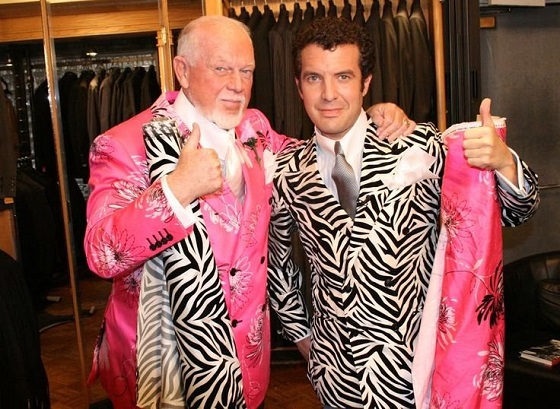
“Well, Tim, this is our last show. . . . Thanks everybody for listening and toodaloo,” 91-year old Don Cherry allegedly on his final podcast episode.
Once upon a time in a public broadcaster far, far away there was an identity crisis. Who should we be as we enter the 21st century? We depend on government for our financing, but our audience relies on people who hate government.
At CBC that argument could be summed up by two figures on the TV network. Rick Mercer. Don Cherry. Both were brilliant communicators, masters of the craft of holding eyeballs. But they represented diametrically opposed audiences. Mercer was the glib political voice of This Hour Has 22 Minutes. Cherry was the bombastic voice of Hockey Night in Canada, as Canadian as the brown beer stubby.
Mercer was worshipped by the folks in the C suite and liberal media. With his searing walking shots he lanced egos and asked uncomfortable questions. He called out sacred cows. Yet there was never any doubt in CBC’s upper reaches about whose side he was on in the culture war at CBC. He was safe.
Cherry was the unpredictable occupant of Coach’s Corner, the bombastic voice of white anglo hockey culture. He was abrasive and unforgiving. His first-period rants beside his Topo Gigio Ron Maclean were must-watch for the demographic. They also, it seemed, constituted must watching for his critics.
[Confession: I was one of his critics, paid to be so. We tangled often over his act. He ripped me in the 2004 NHL playoffs, alleging I said he was insincere about kids with cancer. During the infamous 1987 World Junior brawl he said I was a coward who wouldn’t defend his own kids in a fight. etc. He sicced his bots on me. While I disagreed with much of what he said, I defended his right to say such things. My beef was mostly with HNIC which refused to allow any dissent to Cherry’s act on the show . It was a noisy one-note symphony.

Don was durable, holding his prime position for decades, putting himself above the title many Saturdays with headline material. In the sea of pearl clutchers at CBC he stood out. While the suits above recoiled at his Canadian Legion catechism, they also knew he was an asset they could play when they went for funding in Ottawa. “See, we have all sorts of political views on the network.”
When CBC lost its HNIC franchise to Sportsnet Cherry became someone else’s problem. Eventually the Woke folk at Rogers tired of telling him to knock off the politics and cultural stuff. He was let go in 2019 for saying what he’d always said. Maclean then put in the knife to save his own hide.
Mercer’s highly rated act continued unabated till 2018. One of his most popular gigs— the one most likely to appeal to posh Canadians— was talking to Americans about Canada. It was brilliant in its simplicity. Go to famous colleges and universities to plumb the depths of their Canadian knowledge. Likewise, buttonhole well-known American politicians.

The topics were many and ridiculous. Should Canada protect the famous location Joe Clark’s Hole? What should Canada do about its melting national igloo? Could they congratulate Jean Chretien on a rare political feat called a “Double Double” in which he received support from both sides of the Canadian parliament.
He asked Al Gore about Canada moving the capital city from Kingston, Ontario to Toronto (Gore thought it smart). He convinced tourists at Mount Rushmore that the mineral rights to the mountain had been sold to a Canadian firm that was getting ready to drill for oil in Lincoln’s forehead.
He asked Americans to condemn Canada’s practice of euthanizing senior citizens by setting them adrift on Northern ice floes. In a famous moment, future President George W. Bush failed to correct Mercer when he referred to Chrétien as “Jean Poutine”
Mercer always said he didn’t think Americans were ignorant. Eighty percent had the right responses and those never made it to air. For the rest it was just that they couldn’t resist an open mike and having a take on things they knew nothing about. He had affection for them.
For Canada’s Left, insecure in its northern faculty-lounge, that subtlety was lost. Mercer’s routines reinforced a smug anti-American attitude in the Liberals and NDP base. All they saw was a nation of nitwits. “Look, what bozos!” The orientation of the fashionistas turned away from the U.S. to supposed European sophistication and societal controls for climate, population growth and Covid. Hello, Mark Carney.
This bias was reinforced by the increasingly self-loathing voices on the cable news of the American Left. Every GOP figure from George W. Bush till Trump today became a comic character. Canadian lefties adored it. As we’ve written often the snide attitude allowed Canadians to ignore that Americans were protecting them for free and keeping them rich. And taking the overflow from Canadian’s prized healthcare system.
This arrogance culminated in the March election where the mere mention of Trump sent Canadians fleeing back to a Liberal administration that was moribund after a decade of incompetence. It has an echo in Toronto’s Hockey Hall of Fame again declining to award Cherry the Foster Hewitt award as a legendary TV journalist. Love him or hate him he’s earned it. It’s arguable whether the aging Cherry will even be around to be chosen next year.
For sure his political impact will resonate for long after he’s gone in the populist resurgence in western Canada and elsewhere. If only Rick Mercer were allowed back on CBC to cover it.
Bruce Dowbiggin @dowbboy is the editor of Not The Public Broadcaster A two-time winner of the Gemini Award as Canada’s top television sports broadcaster, his new book Deal With It: The Trades That Stunned The NHL And Changed hockey is now available on Amazon. Inexact Science: The Six Most Compelling Draft Years In NHL History, his previous book with his son Evan, was voted the seventh-best professional hockey book of all time by bookauthority.org . His 2004 book Money Players was voted sixth best on the same list, and is available via brucedowbigginbooks.ca.
-

 Crime2 days ago
Crime2 days agoNational Health Care Fraud Takedown Results in 324 Defendants Charged in Connection with Over $14.6 Billion in Alleged Fraud
-

 Health2 days ago
Health2 days agoRFK Jr. Unloads Disturbing Vaccine Secrets on Tucker—And Surprises Everyone on Trump
-

 Business1 day ago
Business1 day agoElon Musk slams Trump’s ‘Big Beautiful Bill,’ calls for new political party
-

 Business13 hours ago
Business13 hours agoWhy it’s time to repeal the oil tanker ban on B.C.’s north coast
-
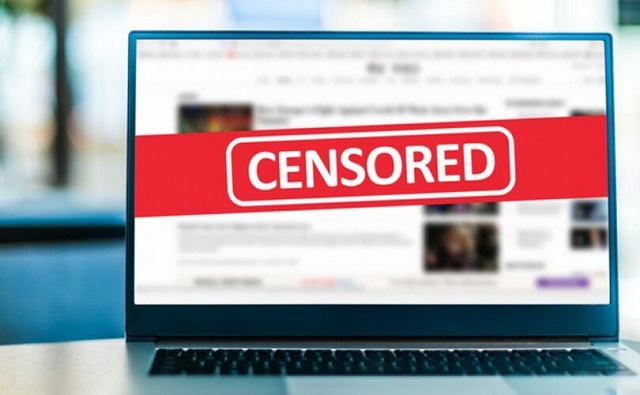
 Censorship Industrial Complex1 day ago
Censorship Industrial Complex1 day agoGlobal media alliance colluded with foreign nations to crush free speech in America: House report
-
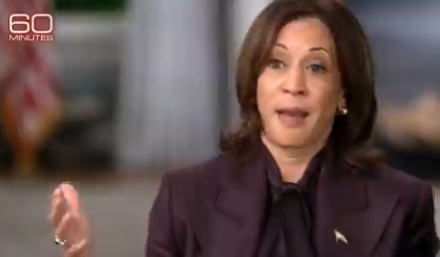
 International21 hours ago
International21 hours agoCBS settles with Trump over doctored 60 Minutes Harris interview
-
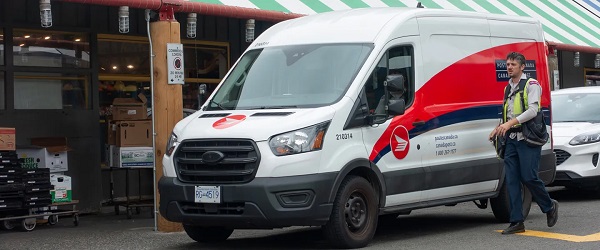
 Business13 hours ago
Business13 hours agoLatest shakedown attempt by Canada Post underscores need for privatization
-

 Energy13 hours ago
Energy13 hours agoIf Canada Wants to be the World’s Energy Partner, We Need to Act Like It
